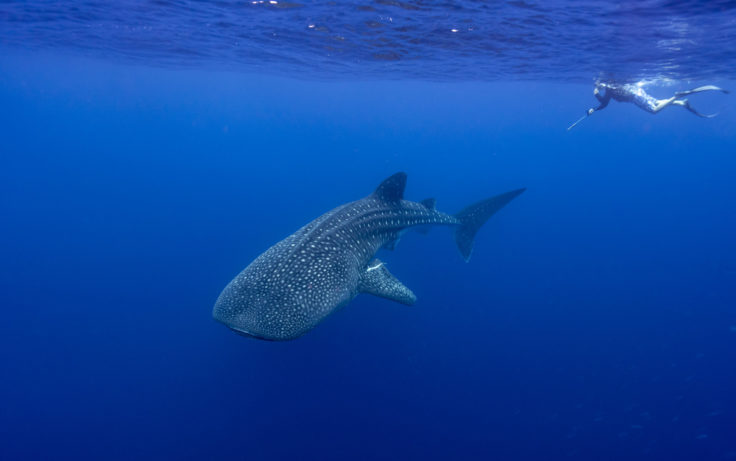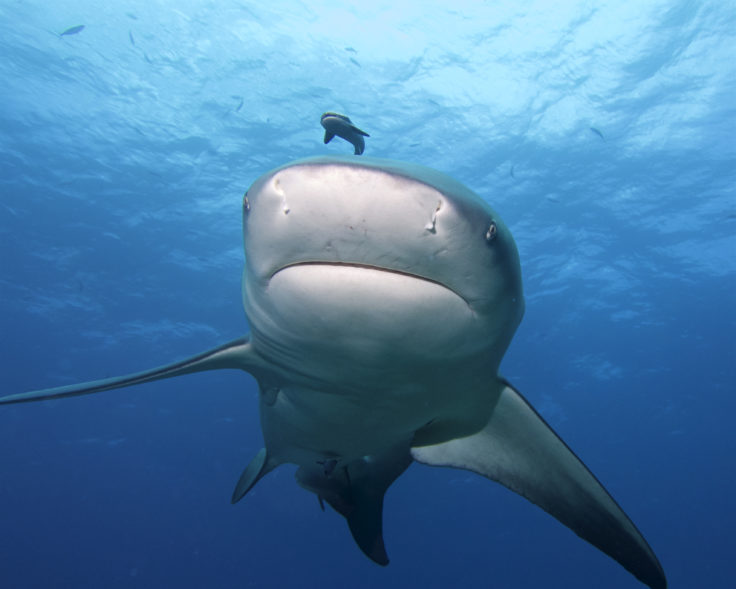Mysterious lives of sharks and rays revealed
Scientists have unlocked the mysteries of how shark and ray species move up and down the ocean water column, in efforts to better understand them and protect their future.
A new study published this month (August 2022) provides the first ever global analysis of how the elasmobranch community (sharks, skates and rays) use the vertical dimension of the ocean. The research team, including fish biologist Ryan Saunders at British Antarctic Survey (BAS), analysed some of the most mysterious deep-diving species and those that spend more time in shallower water.

Using data from 989 biotelemetry tags – tags which allow remote measurements of behavioural activity – the global team of 171 researchers from 135 institutions analysed 38 species of elasmobranchs from the North Pacific to the Indian Ocean, and the Arctic to the Caribbean. Researchers hope that this new information will help improve conservation management plans that were previously hindered by a lack of data for certain species.
The team were surprised to learn that 13 species were found to dive to depths greater than one kilometre beneath the surface. Whale sharks (Rhincodon typus) were found to dive to a staggering 1896 metres while white sharks (Carcharodon carcharias) were recorded diving deeper than 1200 metres, providing new and important insights into the behaviour of these ocean giants.
The data also revealed how some species vary their depth in different parts of the world. It showed how this changes between night and daytime periods as the predators move up and down in the water to hunt their prey and, in some cases, avoid being hunted themselves.
Although the reasons why species usually known to frequent shallower waters were recorded diving into deep, dark waters is not confirmed, the study suggests it is likely a combination of seeking food sources, body temperature regulation, reproduction, and predator avoidance.
The team found that although many species can and will undertake deep dives, 26 of 38 species including the oceanic whitetip shark (Carcharhinus longimanus), tiger shark (Galeocerdo cuvier), scalloped hammerhead (Sphyrna lewini), and silky shark (Carcharhinus falciformis) spent more than 95% of their time in the top 250 metres of the water column, depths where they are most likely to interact with fishing gears.

Dr David Curnick, Research Fellow at the ZSL Institute of Zoology and co-lead author of the paper, said:
“The way that large marine animals use the horizontal space in our ocean has been well studied. However, until now, comparative studies in the vertical planes have been limited, despite the ocean being an average 3.5 kilometres deep and elasmobranchs occupying all levels within this dynamic environment.”
“Investigating how elasmobranchs use the vertical dimensions of their habitat is key in understanding the way they live, but also how anthropogenic stressors are impacting them. This helps us to find ways to better protect them through more informed monitoring strategies for example. By looking at a wide range of elasmobranch species in this study, we demonstrate how they face overlapping risks, such as targeted fisheries and getting caught in nets, also known as ‘bycatch’.”
More than one third of all sharks and rays are threatened with extinction, according to the IUCN Red List of Threatened Species. Having a three-dimensional map of how elasmobranchs use the ocean is vital in understanding the roles they play in wider ecosystems and to determine their individual exposure to threats.
Stanford Postdoctoral Research Fellow and co-lead author of the paper, Dr Samantha Andrzejaczek said:
“This massive dataset provides new insights into the vertical movement patterns of sharks and rays on a global scale for the first time. This is an important step for both understanding which sharks and rays are most likely to face threats, but also to consider how changing temperature and oxygen levels may influence their vertical distributions”.
As the world warms due to climate change, it is predicted that the structure of the ocean is also going to change. With many areas suffering oxygen depletion and shifts in ocean chemistry, many species have already been driven into unfamiliar territory and habitats. However, a better understanding of their fundamental ecology can inform predictions on how reduced oxygen availability at certain depths could limit shark, ray and skate vertical movements and help to predict the wider implications of climate change.
Co-author Dr Ryan Saunders from BAS says:
“Globally, elasmobranchs are vulnerable to a range of pressures from unsustainable fishing practises and climate change. However, little is known about their habitat preference and behaviour which hinders development of protective measures. This paper is the first global synthesis of elasmobranch habitat using satellite linked biotelemetry, which provides crucial metrics to aid new conservation measures and protect these iconic animals across the globe.”
Diving into the vertical dimension of elasmobranch movement ecology by Andrzejaczek et al is published in the journal Science Advances. Read it here